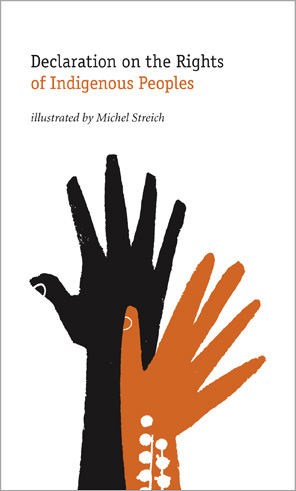
After finishing the illustrated book of the Declaration of Human Rights, I wondered if I could help to bring attention to a UN document which at the time was hardly known or talked about among Australians. The Declaration on the Rights of Indigenous Peoples had been adopted by the UN General Assembly a year earlier, and Australia was one of only four member States worldwide to oppose it.
This Declaration describes human rights applied to the particular situation of indigenous populations around the world. Many indigenous people, including the Aboriginal and Torres Strait Islander people of Australia, are struggling for land rights, the right to self-determination and the right to be treated as equal citizens.
Published by Allen & Unwin
ISBN 9781741758450 (out of print)
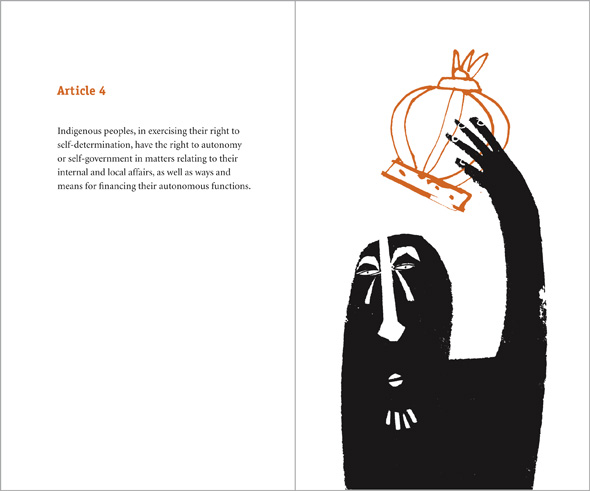
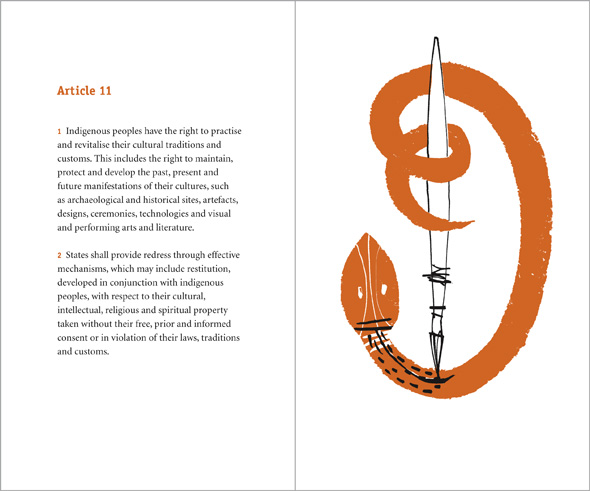
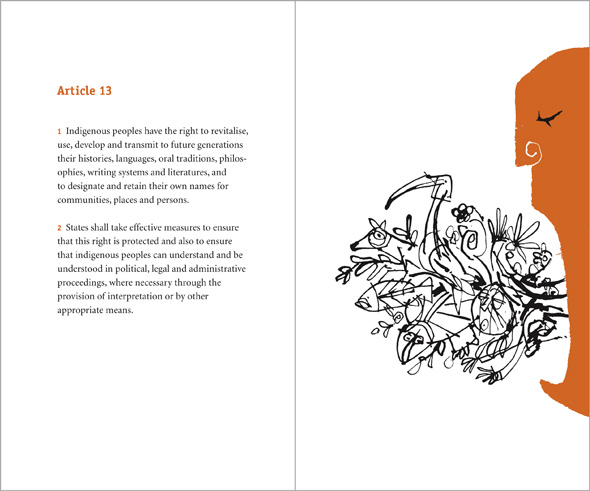
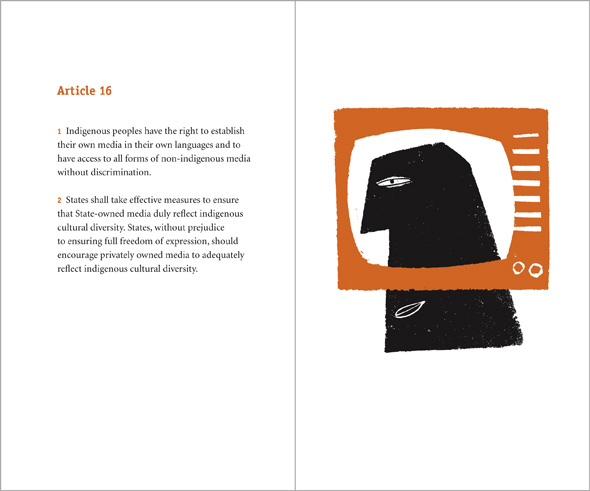
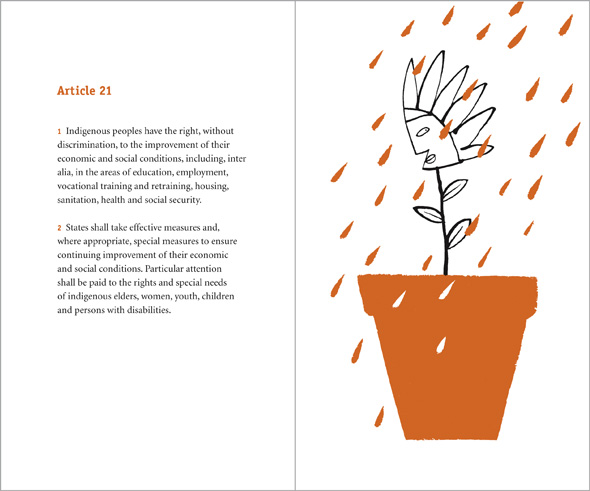


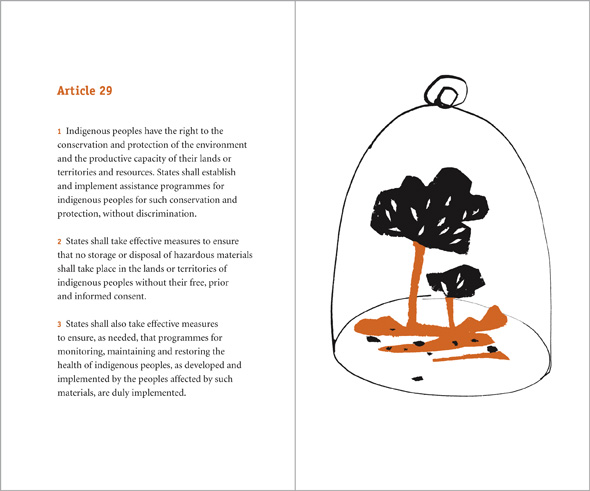
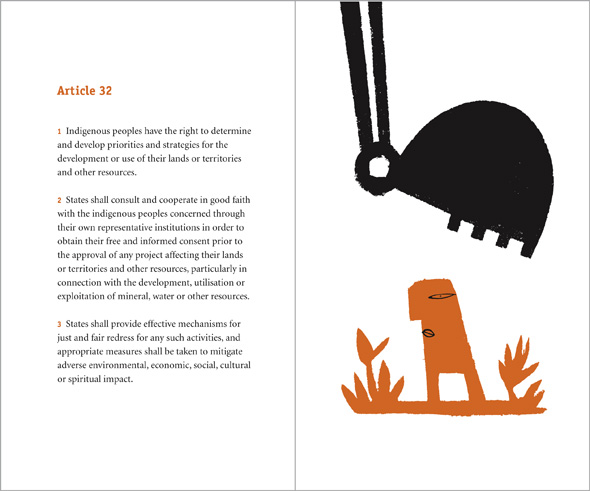
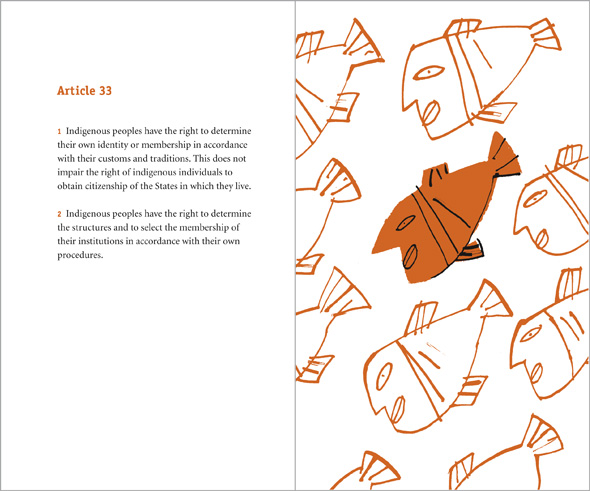
The Declaration on the Rights of Indigenous Peoples was proclaimed after over 20 years of negotiations between UN member states and indigenous peoples. It is seen as a landmark document recognising indigenous rights and freedoms, among them self-determination, ownership and use of lands and natural resources, as well as maintaining and developing indigenous political, religious, cultural and educational institutions. It also establishes the right to protection from genocide and to compensation for rights violations.
I am not of indigenous descent myself, and I tried to tread very carefully while dealing with this subject. I kept my approach international, alluding in my illustrations to indigenous traditions all over the world. At the same time, I did not directly reference any indigenous art, and checked about the book with the Aboriginal and Torres Strait Islander Art department at the Art Gallery of NSW in Sydney before publication, who kindly made sure I did not unwittingly include illustrations that may be perceived as offensive. Ideally, an Indigenous artist should have illustrated this book, but I felt that I could make a difference and show solidarity by creating this book as a follow-up to my illustrated Declaration of Human Rights.